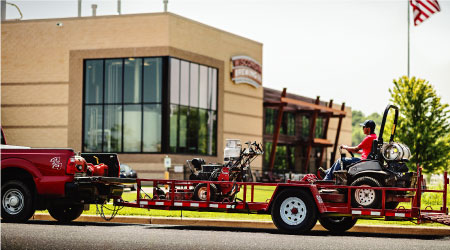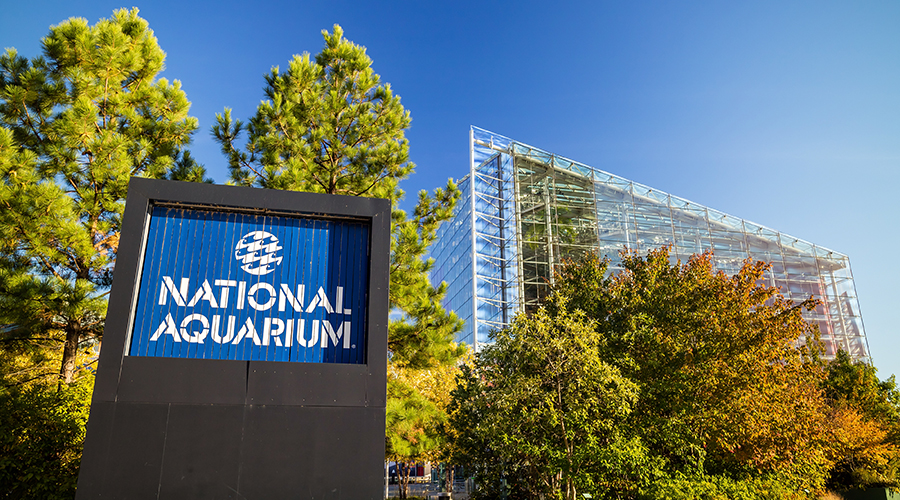Propane's Role in Decarbonization Today and Into the Future
Here's how to reduce emissions with maintenance and landscaping equipment powered by propane.
Facility managers and building owners across the country are being held to higher sustainability standards, encouraging them to adopt greener and low-emissions practices. This sustainability overhaul includes the landscaping and maintenance equipment used on-site.
This shift is a result of ongoing decarbonization momentum, air quality challenges and emission reduction regulations. Notably, more than 50 percent of the U.S. population currently lives in a state with comprehensive carbon emissions legislation.
Some states, like California, are taking drastic measures and regulating the sale of fuel-powered small off-road engines as a mandate toward full electrification. Small Off-Road Engines (SORE) are spark-ignition engines rated at or below 19 kW (or 25 hp), including engines used for lawn and garden equipment as well as other outdoor power equipment and specialty vehicles.
However, a single-energy mandate isn’t a realistic solution from an environmental or financial standpoint, and it’s important to consider other clean, low-emissions energy solutions available today.
Propane is not only clean — and getting even cleaner with the development of renewable propane — but propane equipment is also affordable and known to increase productivity, uptime, and efficiency among users. The innovation and adoption of alternative energy sources, like propane, still has a seat at the table in today’s national energy conversation.
Accelerating decarbonization and reducing harmful emissions
While many mandates are pushing professionals to adopt electric-only equipment, propane offers a low-emissions alternative for many small engine applications.
According to data from the Propane Education & Research Council (PERC), propane-powered equipment emits fewer nitrogen oxide (NOx) emissions than equipment powered by electricity, gasoline, and diesel — and using propane produces 43 percent fewer greenhouse gas (GHG) emissions than the equivalent of average grid emissions.
Propane engine technologies continue moving toward zero emissions as the propane industry and top brand manufacturers continually work together to improve exhaust emissions and fuel efficiency.
For example, Briggs & Stratton just announced a new engine that’s been certified by the Environmental Protection Agency (EPA) as compliant with the Clean Air Act emissions standards. Notably, when converted to propane, the Vanguard 400 optimized engine with a catalyst muffler can reduce carbon monoxide emissions by 80 to 95 percent and allow the engine to pass hydrocarbon and nitrogen oxide engine standards, which are difficult to achieve with a carbureted gasoline engine.
Additionally, companies like Alliance Small Engines and Onyx Solutions offer aftermarket conversions for popular small engine models and equipment — new and already in-service.
Moving the needle even further on environmental protection
In addition to engine technology advancing and getting cleaner, propane as an energy source is getting cleaner, too, with the development of renewable propane. Renewable propane is a byproduct of the renewable diesel and sustainable aviation fuel production process, which converts plant and vegetable oils, waste greases, and animal fat into useful energy. The production of renewable propane has increased, and the adoption of this sustainable energy source will continue to grow.
Because it is produced from renewable feedstocks, renewable propane is even cleaner than conventional propane (an already clean option), and far cleaner than other energy sources. And renewable propane can be used for all the same applications, given that its chemical structure and physical properties are the same as conventional propane.
The production and adoption of renewable propane both continue to grow. Propane marketers in California have committed to providing 100 percent renewable propane by 2030.
While already established in more urban areas, specifically in California, this fuel is growing in popularity in other parts of the country, too. In fact, earlier this fall, the city of Petersburg welcomed the first gallons of renewable propane into the commonwealth of Virginia. The city’s police and shuttle fleets are converting 49 vehicles from gasoline to run on renewable propane. This transition will not only significantly reduce the vehicle fleet’s GHG and criteria pollutant emissions, but it will also save the city money with propane’s low total cost of ownership.
It won’t sacrifice cost or performance for a clean operation
Facility managers are driven by ESG goals and sustainability plans. Electrification of everything is not a ubiquitous solution. Facility managers and building owners seeking clean, sustainable equipment for their maintenance and landscaping needs don’t want to sacrifice cost or performance in the process.
Fortunately, with propane, facility managers don’t have to make a trade off. Propane offers competitive pricing in commercial landscaping, helping companies avoid the expenses associated with electrification including infrastructure costs and expensive batteries. Propane-powered equipment has a longer lifespan than electric equipment, too.
Joe Calhoun is the associate director of business development for the Propane Education & Research Council. He can be reached at joseph.calhoun@propane.com.
Related Topics:












